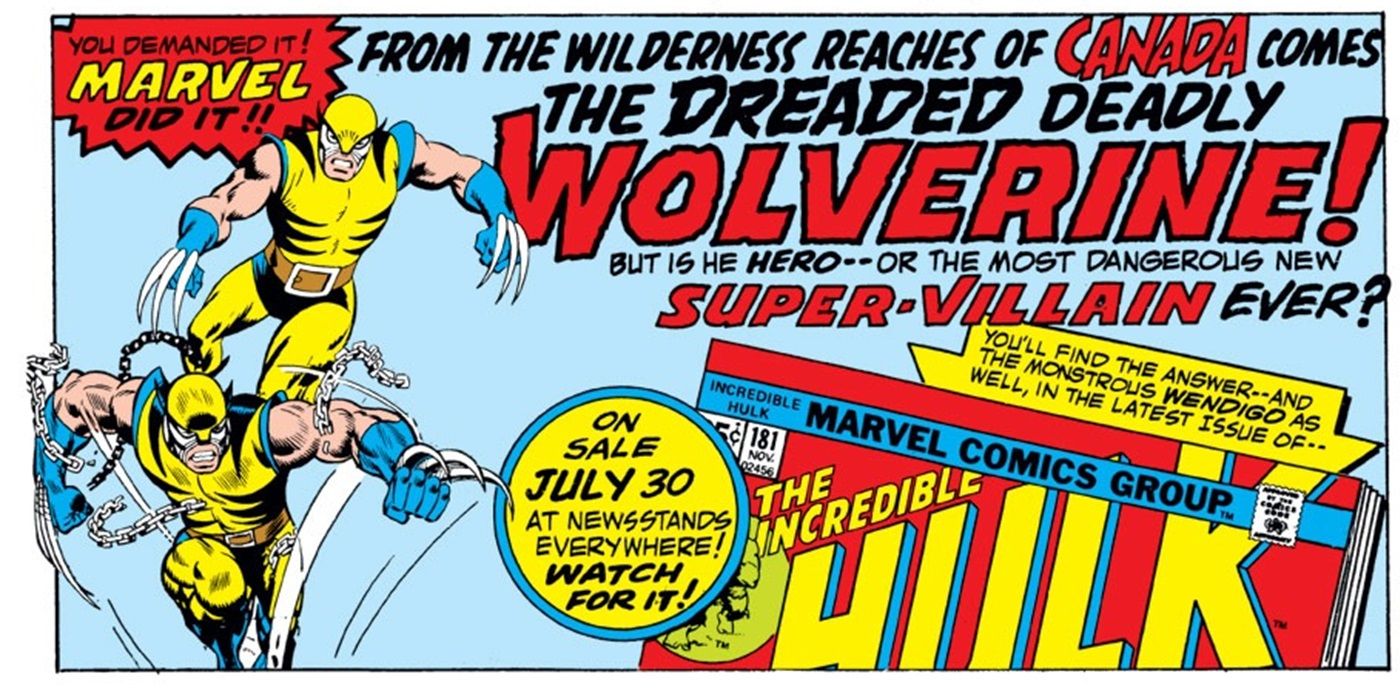Comic Book Questions Answered is a feature where I answer whatever questions you folks might have about comic books (feel free to e-mail questions to me at brianc@cbr.com). Today, we look into whether appearances in ads count as a comic book character’s “first appearance.”You know those ads you sometimes see, like, “10 things THEY DON’T WANT YOU TO KNOW ABOUT DISH SOAP” or whatever. Well, if you’ve been reading my columns long enough, you’ll know this thing that “they don’t want you to know,” which is that basically 100% of the “rules” in this world are made up and people just decide to go along with them. The singer Noah Kahan has been having some fun with the fact that his songs are all about New England (he grew up in Vermont), and yet he points out that when he says “New England,” he is pointedly NOT counting Connecticut. And some people get very upset at this. It’s obviously all for fun, but at the end of the day, there isn’t actually an “official” New England. There’s a group of states that are historically considered “New England” (and yes, Connecticut is in it, even though Southwest Connecticut is essentially just an extension of Westchester County in New York, which gives rise to Kahan’s joking exclusion of Connecticut), but there is no “official” New England. It’s just a term that people use for a group of states in the Northeast corner of the United States that we’ve all pretty much agreed on, until someone like Kahan calls us out on it.Well, right off the bat, that goes into the point that there is no “official” definition of what is or is not a “first appearance,” except to note that typically it is your first appearance in a comic book story, unless that first appearance is determined to be a “cameo.” However, there truly is no good rhyme or reason as to why something is deemed a “cameo” versus a “first appearance,” besides the main rule of it all – whatever people decided was “the” answer inevitably becomes THE answer.
Comic Book Questions Answered is a feature where I answer whatever questions you folks might have about comic books (feel free to e-mail questions to me at brianc@cbr.com). Today, we look into whether appearances in ads count as a comic book character’s “first appearance.”
You know those ads you sometimes see, like, “10 things THEY DON’T WANT YOU TO KNOW ABOUT DISH SOAP” or whatever. Well, if you’ve been reading my columns long enough, you’ll know this thing that “they don’t want you to know,” which is that basically 100% of the “rules” in this world are made up and people just decide to go along with them. The singer Noah Kahan has been having some fun with the fact that his songs are all about New England (he grew up in Vermont), and yet he points out that when he says “New England,” he is pointedly NOT counting Connecticut. And some people get very upset at this. It’s obviously all for fun, but at the end of the day, there isn’t actually an “official” New England. There’s a group of states that are historically considered “New England” (and yes, Connecticut is in it, even though Southwest Connecticut is essentially just an extension of Westchester County in New York, which gives rise to Kahan’s joking exclusion of Connecticut), but there is no “official” New England. It’s just a term that people use for a group of states in the Northeast corner of the United States that we’ve all pretty much agreed on, until someone like Kahan calls us out on it.
Well, right off the bat, that goes into the point that there is no “official” definition of what is or is not a “first appearance,” except to note that typically it is your first appearance in a comic book story, unless that first appearance is determined to be a “cameo.” However, there truly is no good rhyme or reason as to why something is deemed a “cameo” versus a “first appearance,” besides the main rule of it all – whatever people decided was “the” answer inevitably becomes THE answer.
#Comic #Book #Ads #Count #Appearances #Characters
Note:- (Not all news on the site expresses the point of view of the site, but we transmit this news automatically and translate it through programmatic technology on the site and not from a human editor. The content is auto-generated from a syndicated feed.))



